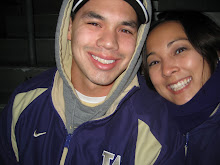As my current Walden ITC course reaches an end, I have started to think about some the ways that I can begin to implement many of the strategies and techniques that we have been exploring throughout this course. With today’s population of students so immersed with technology, it is imperative for the educators to begin to both adapt and evolve the way they are both teaching and connecting with their students. Nick DeKanter reinforced the importance of integrating digital-based games into the classroom. DeKanter explained how, “…content-rich strategy games built on a highly flexible simulation engine is the perfect hub to the spokes of educational duality” (DeKanter, 2005, p. 29).
One of the goals that I would like to strive for is to continue to research some of the digital games available for teachers. Digital games provide students with an engaging and motivating way to both learn and practice a variety of skills. Leah Hoffman explained how, “Electronic games can inspire players to explore new ideas and concepts” (Hoffman, 2009, p. 21). Although electronic games appear to have a significant impact upon how students are learning, it is important to note that they are simply a teaching tool to help support teachers. Karen Billings shared how, “The effective deployment of any instructional resource requires the support of teachers” (Billings, 2009, p. 26). The techniques and tools that I learned about throughout this course have provided me with many resources and ideas on how to best educate students in today’s society. In order to help my students both learn and retain the types of skills they will need, I definitely plan to incorporate digital-based gaming into my instruction.
Kevin Richstad
References:
Billings, K. (2009). Lessons from the trenches. School Library Journal, 55(10), 26–27.Retrieved from the Education Research Complete database.
DeKanter, N. (2005). Gaming redefines interactivity for learning. TechTrends, 49(3), 26–32. Retrieved from the Education Research Complete.
Hoffman, L. (2009). Learning through games. Communication of the ACM, 52(8), 21–22. Retrieved from the Academic Search Premier database.
Sunday, April 25, 2010
Friday, April 2, 2010
Online Learning in K-12 Schools
Throughout this week's learning resources in my current Walden ITC course, we have been exploring some of the ways that online learning can help support today's students. The attached PowerPoint presentation provides an overview of how a course management system such as Moodle can be used to set up an online classroom.
http://www.scribd.com/doc/29347162
http://www.scribd.com/doc/29347162
Sunday, February 28, 2010
Reflection: Final Blog Post - 6714
Throughout my past Walden University course, we have been exploring many of the techniques and strategies that can be used to reach and engage all learners through the support of technology. The main focus of the class revolved around how critical it is for today’s educators to differentiate instruction. One of the techniques that I have already started using is flexible grouping. According to Smith & Throne (2007), flexible groups are important because they mimic some of the social and work relationships that students will someday have to negotiate, and allow them to practice future job-related skills (p. 113). My students are organized into heterogeneous groups. This provides them with several opportunities throughout the day to support each other’s needs and share their diverse learning abilities.
Another resource that I would like to include is GoogleDocs. GoogleDocs provides students with the capability to collaborate both within the classroom and from their own personal computers outside of the classroom hours. I would also like to begin posting a discussion thread to our class website so students can discuss topics outside of the classroom walls. This will provide some of the more introvert type of students with an opportunity to clearly/confidently express their thoughts. Wikis and Webquests are some additional tools that will help to give my students the types of 21st century skills and differentiated instruction they need to be successful.
A final teaching method that I have taken away from this course is applying many of the universal design for learning (UDL) techniques we explored. The CAST website has several great teaching resources that I definitely plan to implement into my own classroom. Overall, the learning experience I have had in this course has helped me to gain a much stronger understanding of how to effectively differentiate instruction to help create stronger connections for my students.
References:
Laureate Education, Inc. (Executive Producer). (2009). Reaching and Engaging All Learners Through Technology. Baltimore: Author.
Smith, G., & Throne, S. (2007). Differentiating Instruction with Technology in K-5 Classrooms. Belmont, CA: International Society for Technology in Education.
Retrieved from Education Research Complete database.
Another resource that I would like to include is GoogleDocs. GoogleDocs provides students with the capability to collaborate both within the classroom and from their own personal computers outside of the classroom hours. I would also like to begin posting a discussion thread to our class website so students can discuss topics outside of the classroom walls. This will provide some of the more introvert type of students with an opportunity to clearly/confidently express their thoughts. Wikis and Webquests are some additional tools that will help to give my students the types of 21st century skills and differentiated instruction they need to be successful.
A final teaching method that I have taken away from this course is applying many of the universal design for learning (UDL) techniques we explored. The CAST website has several great teaching resources that I definitely plan to implement into my own classroom. Overall, the learning experience I have had in this course has helped me to gain a much stronger understanding of how to effectively differentiate instruction to help create stronger connections for my students.
References:
Laureate Education, Inc. (Executive Producer). (2009). Reaching and Engaging All Learners Through Technology. Baltimore: Author.
Smith, G., & Throne, S. (2007). Differentiating Instruction with Technology in K-5 Classrooms. Belmont, CA: International Society for Technology in Education.
Retrieved from Education Research Complete database.
Subscribe to:
Posts (Atom)
